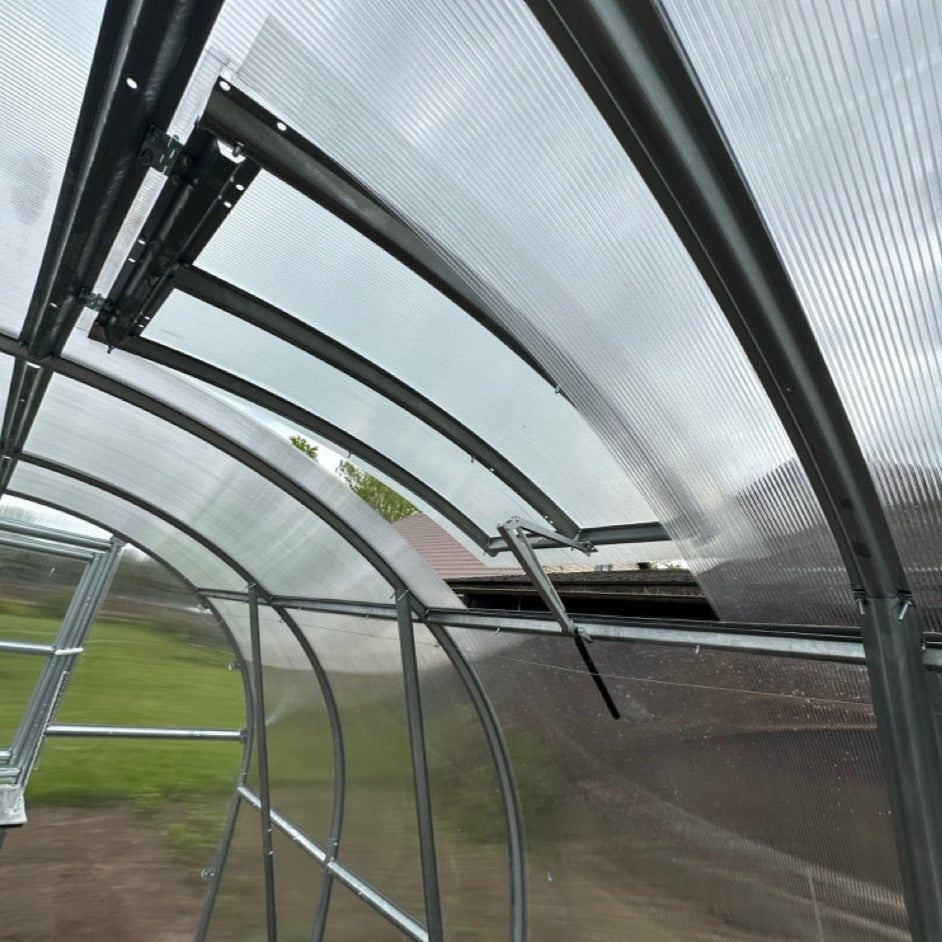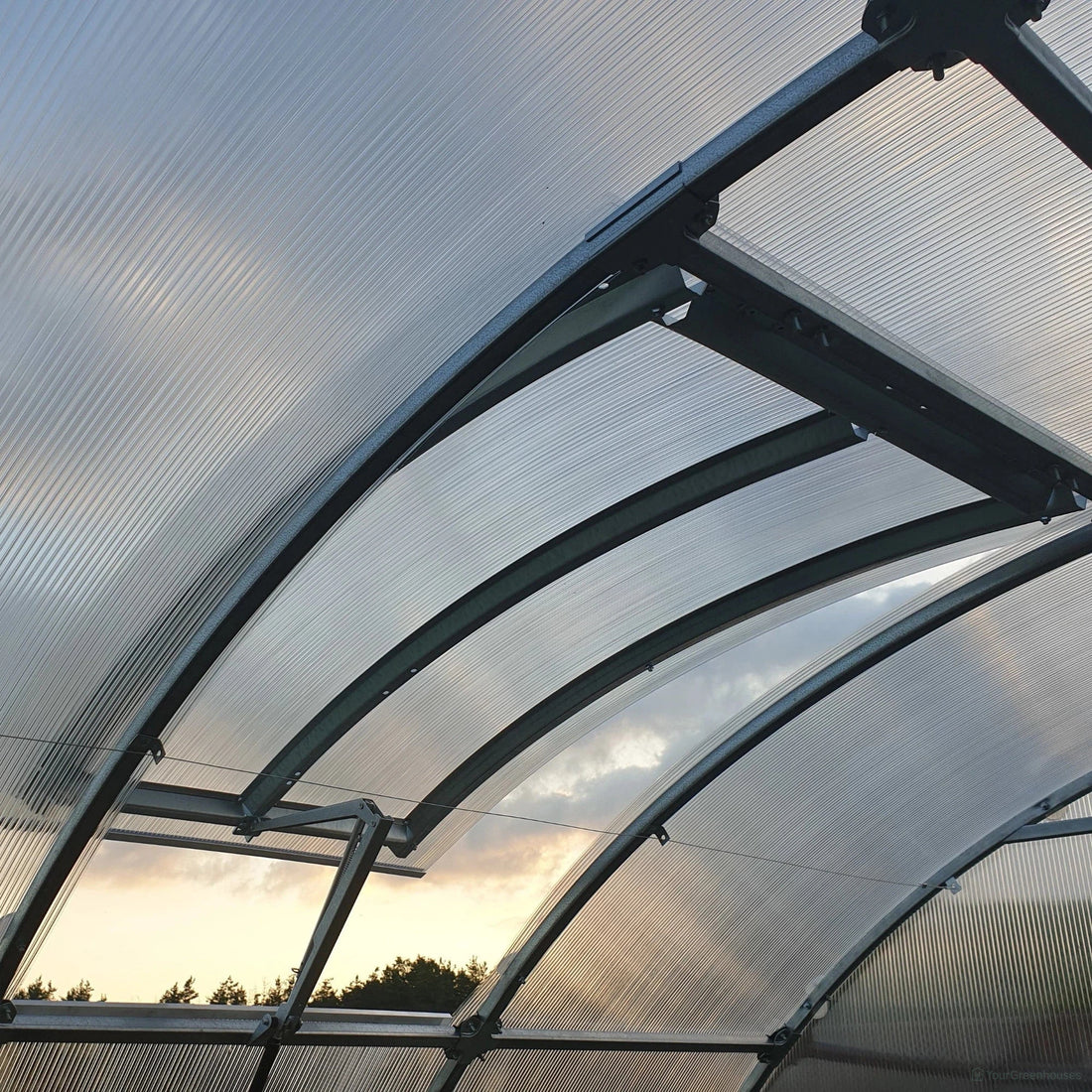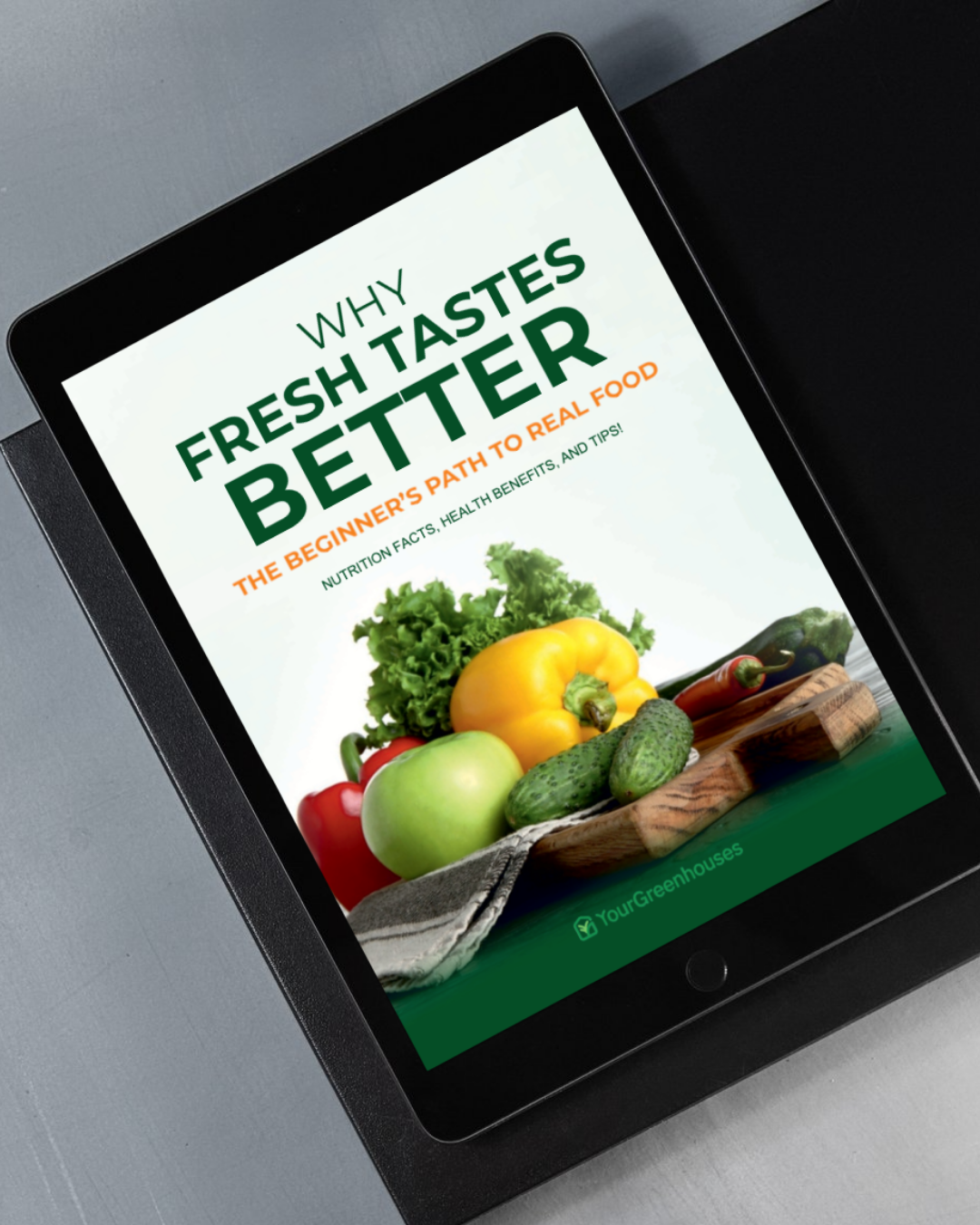How to Start Growing Your Fruit and Vegetables in a Greenhouse
The idea of growing our fruits and vegetables may seem daunting in a world where fresh produce often travels miles before reaching our plates. However, with the help of a greenhouse, cultivating your garden becomes feasible and enjoyable.
Recent studies show that greenhouse gardening can increase crop yields by up to 50% compared to traditional outdoor methods. This underscores the appeal of growing one's fruits and vegetables as a sustainable means of accessing fresh, healthy produce.
In this guide, we will walk you through the basics of greenhouse gardening, making it easy for beginners to start their journey to homegrown goodness. We have also compiled a list of easy-to-grow greenhouse plants.
Choosing the Right Greenhouse
Starting a greenhouse can be exciting for anyone wanting to grow their fruits and vegetables. However, before building or buying a greenhouse, choosing the right type, location, and size is essential.
Here are some factors to consider:
Types of Greenhouses
There are several types of greenhouses, including attached, freestanding, and lean-to greenhouses. Attached greenhouses are connected to a house or building, while freestanding greenhouses are separate structures.
Lean-to greenhouses are built against a wall or fence. Each type has advantages and disadvantages, so choosing the one that best fits your needs is important.
Location and Orientation
The location of your greenhouse is also essential. It should be placed in an area that receives plenty of sunlight, preferably facing south or southeast.
The greenhouse should also be protected from strong winds and shaded from direct sunlight during the hottest part of the day. Choose a location close to a water source and easy to access.
Size and Scalability
The size of your greenhouse will depend on how much space you have available and how many plants you want to grow. Choosing a scalable size is essential so you can add more plants as your needs increase.
A good rule of thumb is to start with a smaller greenhouse and expand as needed. Consider the height of your greenhouse, as this will affect the types of plants you can grow.
Essential Greenhouse Equipment

Starting a greenhouse can be daunting, but with the right equipment, it can be a fun and rewarding experience.
Here is some essential greenhouse equipment to start growing fruits and vegetables in a greenhouse.
Temperature Control Systems
The temperature inside a greenhouse can fluctuate wildly, which can be detrimental to plants. Therefore, it is essential to have a temperature control system in place. A thermostat or thermometer can help monitor the temperature inside the greenhouse.
A ventilation system can help decrease the temperature if the temperature gets too high. On the other hand, if the temperature drops too low, a heating system can help maintain the optimal temperature.
Irrigation and Watering Solutions
Plants in a greenhouse need a consistent supply of water to thrive. An irrigation system can help automate the watering process, ensuring that plants get the right amount of water at the right time.
Drip irrigation systems are a popular choice for greenhouses as they can deliver water directly to the root zone of plants. Additionally, a hose or watering can be used to spot water or supplement the irrigation system.
Shelving and Planting Tables
Shelving and planting tables are essential for maximizing space inside a greenhouse. Shelving can create vertical growing space while planting tables can create a workspace for planting and potting.
When choosing shelving and planting tables, it is crucial to consider the weight capacity and durability of the materials used. Metal or plastic shelves are a popular choice as they are durable and can support heavy pots and trays.
Selecting Fruit and Vegetable Varieties
When selecting fruit and vegetable varieties for a greenhouse, there are a few things to consider. The first is the climate in which the greenhouse is located. The second is the seasonal planting guide for the specific area.
Climate Considerations
Different fruits and vegetables thrive in other climates. It is important to select varieties that will do well in the environment where the greenhouse is located.
For example, in colder climates, selecting more cold-tolerant varieties, such as kale, spinach, or broccoli, may be necessary. In warmer climates, selecting more heat-tolerant varieties, such as tomatoes, peppers, or eggplant, may be required.
Seasonal Planting Guide
Another important consideration when selecting fruit and vegetable varieties for a greenhouse is the seasonal planting guide for the specific area.
This will provide information on when to plant different varieties throughout the year. It is essential to follow your guide to ensure the plants are produced at the optimal time for growth and yield.
Some popular fruit and vegetable varieties for greenhouse growing include:
- Tomatoes
- Peppers
- Cucumbers
- Strawberries
- Blueberries
- Lettuce
- Spinach
- Kale
It is important to select varieties well-suited for greenhouse growth and produce a good yield.
Planting and Cultivation Techniques

Soil Preparation
Before planting fruits and vegetables in a greenhouse, it is important to prepare the soil properly. The soil should be well-draining and nutrient-rich.
One way to achieve this is by adding compost or other organic matter to the soil. This will give the plants the necessary nutrients to grow and thrive.
Ensuring the soil pH is within the appropriate range for the growing plants is also essential. Most fruits and vegetables prefer slightly acidic soil with a pH between 6.0 and 6.5.
A soil test can be performed to determine the pH level, and any necessary adjustments can be made accordingly.
Seed Starting and Transplanting
Starting seeds indoors is a great way to get a head start on the growing season. This can be done using seed trays or individual pots filled with a seed starter mix. The seeds should be kept warm and moist until they germinate.
Once the seedlings have grown to a certain size, they can be transplanted into the greenhouse. It is important to harden off the seedlings first by gradually exposing them to the outdoor environment. This will help them adjust to the change in temperature and light conditions.
When transplanting the seedlings, plant them at the appropriate depth and spacing for the specific plant. This will help ensure they have enough room to grow and receive the necessary nutrients.
Pollination and Plant Management
For many fruits and vegetables to produce a harvest, they require pollination. This can be done manually using a small brush or by introducing pollinators such as bees or butterflies into the greenhouse.
Plant management is also crucial for ensuring a successful harvest. This includes regular watering, fertilizing, and pruning as needed. It is also important to monitor the plants for pests and diseases and take appropriate action if necessary.
Regular Greenhouse Upkeep
Maintaining a clean and well-organized greenhouse is essential for healthy plant growth. Regular cleaning will help prevent the buildup of pests and diseases.
It is recommended to clean the greenhouse at least once a year, preferably before planting season. Cleaning should include removing all debris, disinfecting surfaces, and washing the windows.
In addition, regular maintenance of the greenhouse structure is important. Check for structural damage, such as cracks or leaks, and repair them promptly to prevent pests and diseases from entering.
It is also essential to monitor the temperature and humidity levels in the greenhouse regularly, making adjustments as necessary to ensure optimal growing conditions.
Organic Pest Management Strategies
Preventing pests and diseases is critical to a successful greenhouse garden. Different organic pest management strategies can be used to prevent and control pests and diseases.
One effective strategy is to use companion planting. Companion planting is planting certain plants together that have a mutually beneficial relationship. For example, planting marigolds with tomatoes can help repel pests attracted to tomatoes.
Another strategy is to use physical barriers, such as row covers or netting, to prevent pests from entering the greenhouse. Sticky traps and pheromone traps can also be used to trap and monitor pests.
Finally, organic pesticides can be used as a last resort. It is important to use organic pesticides specifically designed for greenhouse use and follow the instructions carefully to avoid harming beneficial insects and plants.
Frequently Asked Questions
What Are the Best Crops for a Beginner in Greenhouse Gardening?
The best crops for a beginner in greenhouse gardening are easy-to-grow crops such as tomatoes, cucumbers, lettuce, and herbs like basil and parsley.
These plants are relatively low-maintenance and can be grown in various climates. Additionally, they are generally quick to germinate and produce a bountiful harvest.
How Should I Schedule Planting in a Greenhouse Throughout the Year?
Generally, it's best to plant cool-season crops like lettuce, spinach, and broccoli in the fall and winter, while warm-season crops like tomatoes, peppers, and cucumbers should be planted in the spring and summer.
What Are Some Unusual but Rewarding Plants to Cultivate in a Greenhouse?
Some unusual but rewarding plants to cultivate in a greenhouse include exotic fruits like passionfruit, guava, and papaya.
Other options include tropical plants like bananas, pineapples, and ginger. These plants require a warm and humid environment, making them perfect for greenhouse cultivation.
Conclusion: Tips for Growing Vegetables in a Greenhouse
Starting your fruit and vegetable garden in a greenhouse offers a sustainable and rewarding approach to accessing fresh produce.
You need the right greenhouse, essential equipment, suitable plant varieties, and proper cultivation techniques to create an environment conducive to healthy plant growth.
Regular upkeep and organic pest management strategies are essential for maintaining healthy greenhouse gardens. Whether novice or experienced gardener, greenhouse gardening offers a fulfilling journey toward homegrown abundance.












